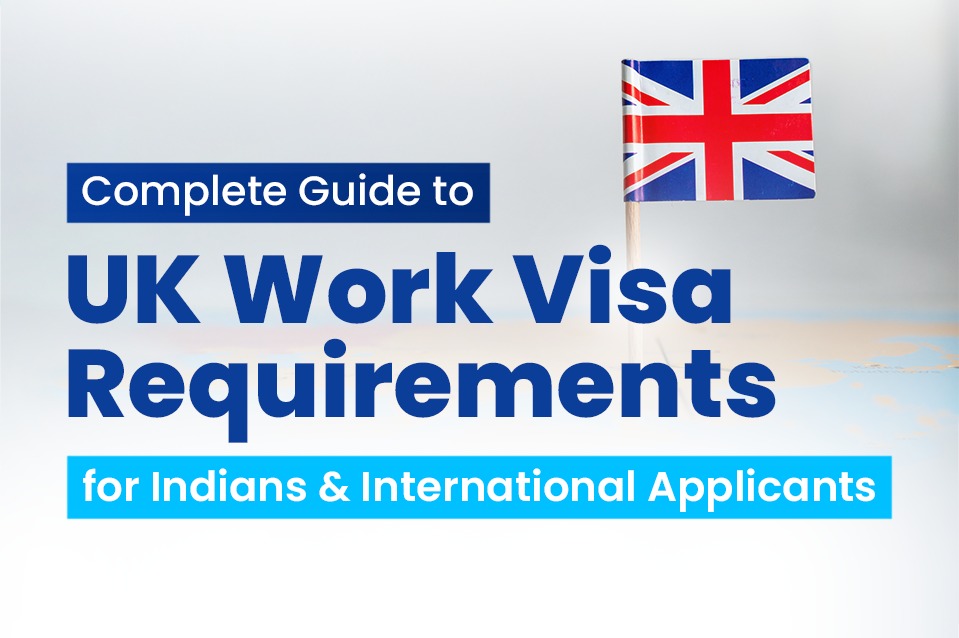
According to new the Home Office figures, the number of visas awarded to foreign workers increased dramatically last year, with Indian and Nigerian employees benefiting the most from the uncapped points-based immigration system.
In the Skilled Work category, Indian nationals continue to be the most common nationality, accounting for over two-fifths (43 per cent) of all visas granted, up 14 per cent from 2019. In contrast, the number of skilled workers in the United States fell by a quarter in 2019. However, the highest percentage rise was in visas granted to Nigerian nationals, which increased by 130 per cent to 6,327 in 2019. The number of visas given to employees from the Philippines (up 53 per cent from 2019) and Pakistan also increased significantly (up 62 per cent from 2019). The number of temporary working visas issued has increased substantially, with over 54,000 approved last year. In comparison, 43,000 were authorised pre-pandemic in 2019 and 23,000 last year. The estimates represent a 132 per cent increase between 2020 and 2021 and a nearly quarter increase over the previous year's figures.
Home Office figures
According to estimates issued by the Home Office this week, the number of migrant workers arriving in the UK has increased by 110 per cent since 2020. In 2021, 239,987 work-related visas were issued, including dependent visas. While some of the increase can be ascribed to lower travel in 2020 due to the pandemic, the figure is still 25% higher than in 2019, before COVID-19 began.
In 2021, almost 150,000 skilled worker visas, the most common visa category for foreigners seeking to enter the UK, were issued. The figure reflects a third more migrants entering the UK than before Covid, resulting from the more liberal points-based immigration system implemented following Brexit. Last year, nearly 3,000 Global Talent visas were authorised, but the 'high value' routes were unsuccessful. Innovator visas, established in April 2019, and Tier 1 Entrepreneur visas, have had a 66 per cent decline in applications compared to 2019.
Case for temporary employees
When queried by the ONS, those on fixed-term contracts, temporary agency employees, casual workers, seasonal workers, and those in temporary work self-identify as temporary workers. According to the Office for National Statistics, the number of temporary employees in the UK surged by 9.16 per cent on a seasonally adjusted basis from October to December 2021, to a total of around 1.71 million, compared to the same period a year ago. The number of temporary employees increased by 1.88 per cent over the previous three-month period ending November 2021. Compared to a year ago, the number of temporary employees as a percentage of overall employment was 6.08 per cent, up from 5.66 per cent.
Challenge associated with temporary employees
According to the released data by the Office for National Statistics (ONS), approximately 442,484 of the 1.71 million temporary employees were there because they couldn't find a permanent job; 460,548 didn't want a permanent contract; 157,047 had a contract with a training term; 653,828 claimed other reasons. Approximately 750,502 men and 963,407 women worked as temporary employees during this time.
Unemployment and economic inactivity rates for the UK
The unemployment rate in the United Kingdom was expected to be 4.1 per cent, down 0.2 per cent from the preceding three months but it has been reported 0.1 per cent higher than before the Covid-19 epidemic. For the three months ending December 2021, the North East (5.6 per cent) had the highest unemployment rate estimate in the UK, while Northern Ireland had the lowest (2.7 per cent).
The rate of economic inactivity in the United Kingdom was predicted to be 21.2 per cent, up 0.1 per cent from the previous quarter and 1.0 per cent higher than before the Covid-19 epidemic. Northern Ireland had the highest estimate of economic inactivity (27.3 per cent), while the East of England had the lowest estimate for the three months ending December 2021. (18.4 per cent). In the three months before December 2021, the East of England had the highest estimated employment rate (79.1 per cent), while Northern Ireland had the lowest (70.7 per cent).
Recent vacancy estimates
The number of vacancies reached a new high of 1,298,400 between November 2021 and January 2022, while the rate of expansion slowed. The total number of openings soared by 113,600 from November 2021 to January 2022, with the highest increase in vacancies seen in accommodation and food service activities, which increased by 21,400 to a new high of 178,300 vacancies. The growth rate from November 2021 to January 2022 was 9.6%, the lowest since February to April 2021 and down from 24.7 per cent in the preceding quarter.
Employees' average total pay (including incentives) increased by 4.3 per cent, while regular salary (excluding bonuses) increased by 3.7 per cent from October to December 2021. Total and regular pay declined in real terms (adjusted for inflation), with total income falling by 0.1 per cent and regular pay falling by 0.8 per cent. Base and compositional impacts pushed up the previous months' impressive growth rates. In January 2022, the most recent estimate of payrolled employees showed another monthly growth (up 108,000) to a new high of 29.5 million. Because of an increase in bonus payments in December 2021, single-month growth in real average total weekly earnings increased 0.1 per cent year over year.
Themis Technologies is willing to help talented individuals with exceptional work experience and recognition in their respective fields and also the individuals who have proven skills to succeed in the future contributing to the UK’s tech sector and community growth. Contact us to know more about our services and realise your dreams of working and settling in the UK.







